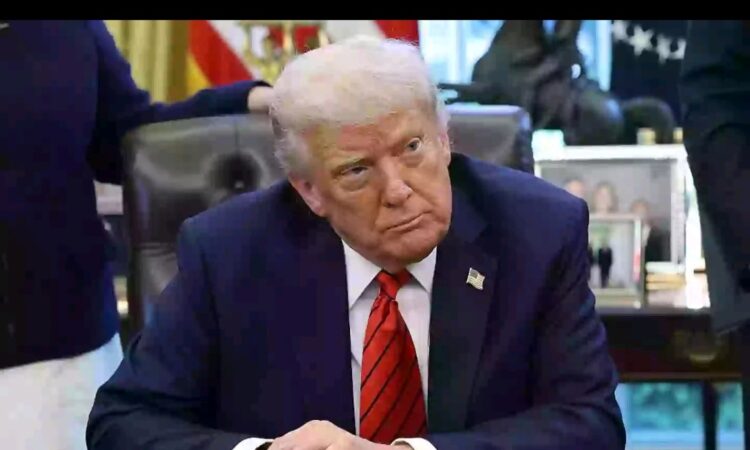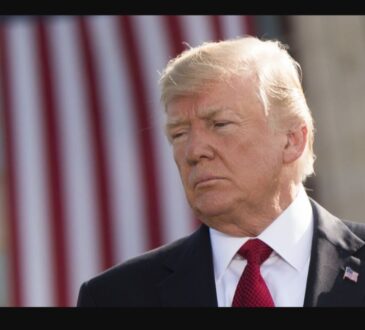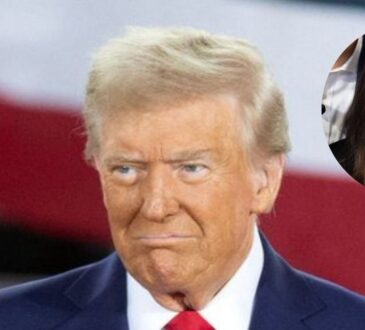
President Donald Trump has sparked a new wave of outrage with a series of angry online posts in which he appeared to call for the execution of Democratic members of Congress and tried to rewrite the story of his role in releasing the Jeffrey Epstein files.
On Thursday, Trump went on his social media platform, Truth Social, to attack six Democratic lawmakers who had told members of the U.S. military that they should refuse any illegal orders, even if those orders came from the president himself. Instead of responding with a normal political statement, Trump accused them of betraying the country.
In one of his posts, Trump wrote that their behavior was “SEDITIOUS BEHAVIOR, punishable by DEATH!” By using those words, he was suggesting that what they did was not just wrong, but a crime so serious that it deserves the death penalty. His message was not a calm legal argument; it was written in all caps and carried a tone of fury and threat.
Trump then went even further. He shared, or “ReTruthed,” a post from an anonymous user who wrote, “HANG THEM GEORGE WASHINGTON WOULD!!” The message was a direct call to hang the Democratic lawmakers, using the name of America’s first president to make it sound like something the country’s founders would support. By boosting that comment instead of rejecting it, Trump gave it his stamp of approval and spread it to his millions of followers. Critics say that kind of language puts a target on the backs of elected officials and can encourage extremism and political violence.
These posts came just as Trump was also trying to claim credit for a bill about the Jeffrey Epstein files. Epstein was a convicted sex offender with connections to wealthy and powerful people around the world, and there has been intense public pressure to see the full records related to his case.
Trump said that he signed a bill forcing the Department of Justice to release all the Epstein files it holds. He bragged that he was the one who pushed Congress to act, writing that he had asked House Speaker Mike Johnson and Senate Majority Leader John Thune to pass the bill, and that “because of this request,” the votes in Congress were almost unanimous. He presented himself as the driving force behind transparency.
However, for months before this, Trump and some of his closest allies in Congress had reportedly tried to block or delay that same bill. They changed their position only when it became obvious that there were enough votes to pass it without them. In other words, once it was clear the bill would succeed, Trump shifted and tried to get in front of it so he could say the outcome was his idea.
Trump also did not mention in his posts that he already had the power, as president, to order the release of the files without any new bill. He chose not to use that power earlier, but now is claiming full credit for the records being made public.
The new law says the Justice Department has 30 days to publish all of its Epstein records in a format that the public can search and download. But Attorney General Pam Bondi still has the option to try to block some or all of the files from being released, for example by arguing that certain documents should stay secret. That means the fight over what the public will actually see may not be over, despite Trump’s confident tone.
Trump’s handling of the Epstein issue has also caused problems inside his own political movement. Some Republicans who usually stand with him decided to support the release of the files, even when Trump and his team were trying to slow things down. That rare public break shows that his grip on the party is not as firm as it once was. Polls have suggested that voters are unhappy with how he has handled both the Epstein controversy and the high cost of living, and those concerns are slowly weakening his image as a strong, in-control leader.
While all of this was happening, Trump was also dealing with another sensitive issue: his relationship with Saudi Crown Prince Mohammed bin Salman. Trump hosted a black-tie dinner in honor of the crown prince, even though U.S. intelligence agencies, including the CIA, concluded that the prince ordered the murder and dismemberment of journalist Jamal Khashoggi in 2018. Khashoggi, who wrote for The Washington Post, was killed inside the Saudi consulate in Istanbul, and his body has never been found.
Instead of backing his own intelligence agencies, Trump publicly defended the crown prince. He said, “He knew nothing about it, and we can leave it at that.” With that short sentence, Trump dismissed years of investigation and the findings of U.S. officials who believe MBS was responsible. His words sent a clear message: he chose to stand by the Saudi leader, not by American intelligence or by the murdered journalist.
Taken together, Trump’s recent statements show a pattern. He is using harsh, extreme language against political opponents at home, suggesting they should face death for speaking out against him. At the same time, he is using soft, protective language about a foreign leader accused of a brutal killing. On top of that, he is trying to rewrite his role in the Epstein files fight, claiming credit for transparency after resisting it for months.
His supporters may see him as tough and bold, but many others see these comments as dangerous. Telling soldiers that members of Congress deserve death, boosting posts that openly call for hanging them, and brushing aside intelligence findings about a murdered journalist all raise serious questions about how he uses his power and words. For now, his posts are just words on a screen—but they are coming from the president of the United States, and the impact of those words is becoming a central part of the story.




